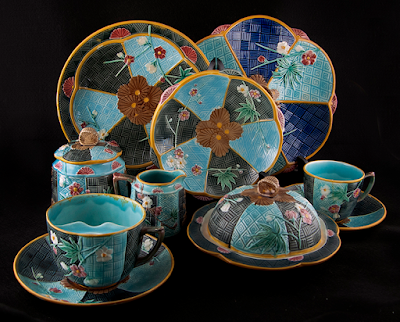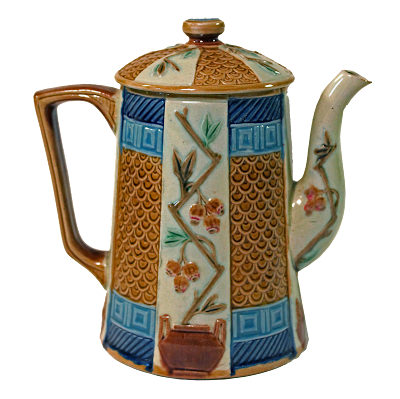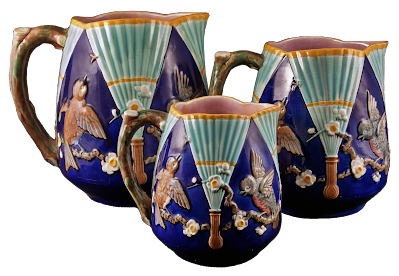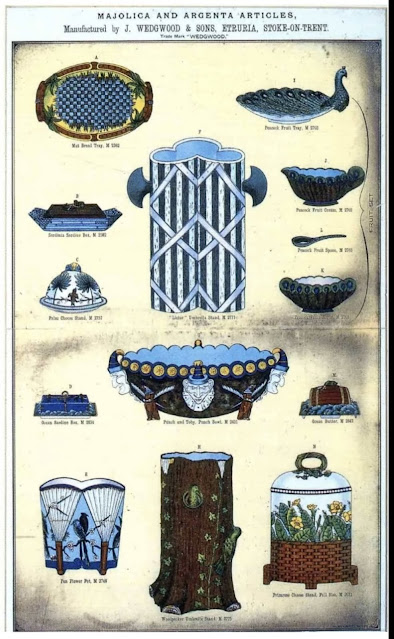In 1879, nineteen years after it first started majolica production, Wedgwood began production of what was to become their most successful majolica pattern, Fan. In the 30 years covered by the Wedgwood pattern books in the Wedgwood Museum, Fan appeared 90 times. That's eleven more times than the runner-up patterns, the Japonesque St. Louis and Grosvenor.
Wedgwood majolica Grosvenor teapot
This fantastic success is the result of a design that, still today, appeals to most majolica collectors. A mixture of fans, birds and prunus blossoms, the design was made in twelve different color combinations with the most popular the ones with ivory, turquoise and cobalt grounds. The Argenta version appeared in 1881 and is today, by far, the most commonly seen version of this pattern.
Wedgwood majolica Fan jugs
Wedgwood majolica Fan cheese bell
Wedgwood majolica Fan garden seat
Wedgwood majolica Fan punch bowl
Wedgwood majolica Fan cake plate
Wedgwood majolica Fan compote
Wedgwood majolica Fan low dessert stand
Wedgwood Argenta majolica Fan dessert set
Wedgwood Fan footed bowl
Wedgwood Argenta majolica Fan cane stand
Wedgwood Fan majolica jardiniere
Wedgwood Fan dessert creamer and sugar
Wedgwood Argenta Fan tall dessert stand
Wedgwood Fan dessert plate
Fan was also made as a bedroom sanitary set.
Catalog page showing various treatments
for Fan sanitary ware including Argenta
Wedgwood Fan soap box
A complimentary pattern, Chicago, was introduced by Wedgwood several years later. It is similar to Fan but without the birds.
Wedgwood majolica Fan pitcher
Wedgwood Argenta Chicago dessert plate
Wedgwood Argenta Chicago ice cream dish
Wedgwood majolica Chicago cane stand
Fan is commonly available and as such has retained moderate prices among dealers. Small plates sell for around $50 and dessert plates sell in the $100-$200 range. Pitchers can be found in a number of different sizes with prices in the $125-$400 price range.
The version with a cobalt ground generally sells for twice that of those with the ivory grounds. Those with turquoise grounds usually sell for 50% more than ivory.































No comments:
Post a Comment